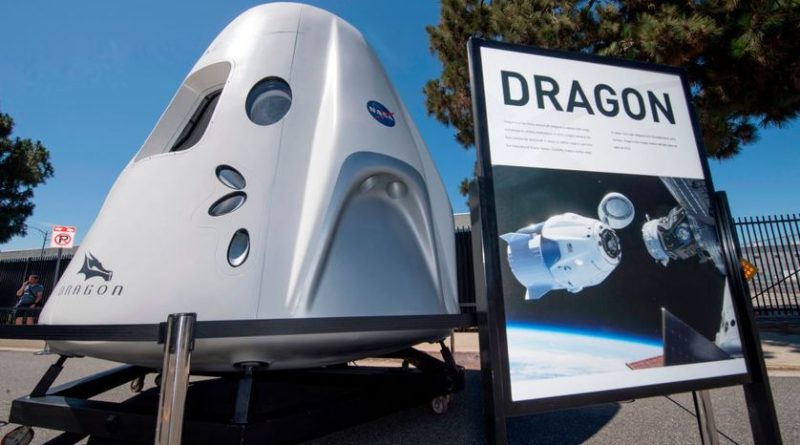SpaceX opens a new chapter in U.S. spaceflight
Energy Disrupter
A little over 18 years since he first came up with the idea of building his own rockets as a means to both reignite and lower the cost of space exploration, Elon Musk watched this weekend as his company SpaceX successfully launched its first manned spaceflight to the International Space Station (ISS).
“This is a dream come true for me and for everyone at SpaceX,” Musk told reporters before the first launch attempt on May 27, which was scrubbed due to weather. “This is not something I thought would actually happen. When starting SpaceX in 2002, I really did not think this day would occur. I expected a 90% chance that we would fail to even get to low-Earth orbit with a smaller rocket.”
The SpaceX Demo-2 mission, the first manned spaceflight launched from American soil since NASA retired the Shuttle program in 2011, is also the first ever operated by a commercial provider. The two NASA astronauts, Bob Behnken and Doug Hurley, went on to successfully dock the Crew Dragon capsule with the ISS on Sunday morning.
“Welcome to Bob and Doug,” NASA Administrator Jim Bridenstine said to the crew in a call from mission control at the Johnson Space Center. “The whole world saw this mission, and we are so, so proud of everything you’ve done for our country and, in fact, to inspire the world.”
They’ll spend anywhere from six to sixteen weeks aboard the space station and return aboard Dragon for a splashdown into the Atlantic Ocean.
“They’re laying the foundation for a new era in human spaceflight,” Bridenstine said of SpaceX before launch. “It’s an era in human spaceflight where more space is going to be available to more people than ever before.”
Welcome competition
 The SpaceX Dragon spacecraft, which is designed to carry people and cargo to orbiting destinations such as space stations, is displayed at the SpaceX headquarters in Los Angeles in July 2019. (Photo: MARK RALSTON/Contributor/Getty Images)
The SpaceX Dragon spacecraft, which is designed to carry people and cargo to orbiting destinations such as space stations, is displayed at the SpaceX headquarters in Los Angeles in July 2019. (Photo: MARK RALSTON/Contributor/Getty Images)
While the mission won’t be deemed a complete success until Behnken and Hurley are safely home, the return of manned spaceflight to America signals some big shifts in the months and years ahead. One of the most immediate impacts? Russia’s monopoly on astronaut access to space is over.
Since 2011, NASA has been purchasing seats aboard Russia’s Soyuz spacecraft to shuttle astronauts to the ISS. While seats initially started out at around $21 million each, they’ve since ballooned to a reported $90 million for a fall 2020 launch. In comparison, according to NASA’s inspector general, the per-seat cost of SpaceX flights is around $55 million.
With Boeing making progress on its own reusable crew capsule called Starliner, it’s clear that access to space will become more cost-competitive than ever before.
“It is a nightmare scenario for the Russian space agency,” one industry expert told Axios. “We’re building a replacement to every rocket and spacecraft they provide.”
Space tourism gains traction
 The SpaceX Falcon 9 rocket launches from Vandenberg Air Force Base carrying the SAOCOM 1A and ITASAT 1 satellites in October 2018 near Santa Barbara, California. (Photo: David McNew/Stringer/Getty Images)
The SpaceX Falcon 9 rocket launches from Vandenberg Air Force Base carrying the SAOCOM 1A and ITASAT 1 satellites in October 2018 near Santa Barbara, California. (Photo: David McNew/Stringer/Getty Images)
Beyond providing access to astronauts, SpaceX’s Crew Dragon is also on the verge of widening access to citizens — that is, if you happen to be a citizen with some deep pockets. According to Business Insider, NASA only plans to book four seats at a time on each spaceflight. With Dragon capable of comfortably seating seven, this leaves extra tickets for those interested in visiting the final frontier themselves.
In June 2019, the space agency announced it would allow U.S. citizens to visit the ISS for up to 30 days at a cost of $35,000 per night. Not counting SpaceX’s launch costs, that’s a vacation with a truly out-of-this-world price tag. Nonetheless, we know of at least one private citizen who’s likely to visit first: Tom Cruise. In early May, NASA dropped that they were working with the “Mission: Impossible” star to film a movie in space on the ISS.
“We will say more about the project at the appropriate time,” a NASA spokesperson told The Verge. “Anything else would be premature.”
SpaceX has also partnered with Space Adventures, a company that has previously helped private citizens take trips to the ISS aboard Russia’s Soyuz spacecraft, to send four tourists on a trip around the Earth in late 2021/early 2022. A similar venture with Axiom Space is planned for late 2021 that will see four tourists embark on a 10-day trip to the ISS.
“This historic mission will forge a path to making spaceflight possible for all people who dream of it,” said Gwynne Shotwell, president and chief operating officer at SpaceX, in a statement.
SpaceX opens a new chapter in U.S. spaceflight
The private space company made history Saturday with the launch of two NASA astronauts into space.
Original Source: https://www.mnn.com/earth-matters/space/blogs/spacex-succeeds-opening-new-chapter-american-spaceflight



















